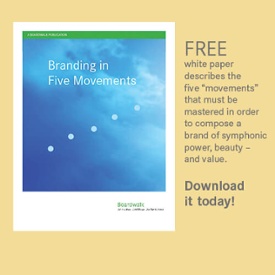 NOTE: This blog post is reprinted from December, 2016. Reading recommendations below and in sidebar are new.
NOTE: This blog post is reprinted from December, 2016. Reading recommendations below and in sidebar are new.
In his incredibly valuable book, Grow, ex-Procter & Gamble Global CMO, Jim Stengel, identified the 50 fastest-growing companies worldwide – now, known as the Stengel 50 – and sleuthed out the one characteristic they all held in common, the one thing that explained their phenomenal growth. After a decade-long study, he found these businesses crossed all sectors and industries, originated from many continents and countries, subscribed to all manner of management philosophies, sourcing, hiring, manufacturing and distribution practices. In the end, he determined they shared only one trait – they all rooted their company values in what Stengel calls the “Five Fields of Fundamental Human Values.” That is, all 50 of these businesses declare, as their originating purpose, a dedication to one of five categories of values. Stengel purists may object, but we’ve found it helpful to simplify the assertion. Let’s just say every business has a purpose and there are five categories of purpose that can be associated with rapid growth. So the question then becomes, can your brand be positioned in a way that aligns with one of these five rapid-growth purpose categories?
First, let’s differentiate between a purpose and a mission. The purpose of a business is to solve a particular problem, to meet a need, to answer the market’s call, in some way. At Boardwalk, we’ve found a purpose statement is best written from the customers’ point of view, e.g., “The XYZ Corporation exists to (solve my specific problem).” If the customer cannot give a business a reason to play a role in his/her life, the business has no purpose, no reason to exist. On the other hand, once a purpose is defined, the mission statement becomes more of an internal declaration of how the business plans to solve the problem, e.g., “At the XYZ Corporation we dedicate ourselves to cutting-edge, industry leadership in the (specific problem-solving field.)” What Stengel found is that it’s purpose, not mission, that lays the groundwork for rapid growth.
Ask Boardwalk about your business’s rapid-growth
category for successful brand positioning.
- Eliciting Joy
- Enabling Connection
- Inspiring Exploration
- Evoking Pride
- Impacting Society
Corresponding examples from the Stengel 50, his list of fastest-growing companies, are:
- Eliciting Joy Coca-Cola
- Enabling Connection FedEx
- Inspiring Exploration Apple
- Evoking Pride Mercedes-Benz
- Impacting Society Dove
Examples of the ideals (purpose) statements Stengel attributes to the named companies:
- Eliciting Joy Coca-Cola … exists to inspire moments of happiness.
- Enabling Connection FedEx … exists to bring peace of mind to everyday connections.
- Inspiring Exploration Apple … exists to empower creative exploration and self-expression.
- Evoking Pride Mercedes-Benz … exists to epitomize a lifetime of achievement.
- Impacting Society Dove … exists to celebrate every woman’s unique beauty.
If your brand is not experiencing the kind of rapid growth that would rank it with the Stengel 50, perhaps you only need to look at it in a different way. Perhaps its brand positioning is just a little off kilter. Try to reimagine your brand as an example of one of the five rapid-growth purpose categories. Which one of them best describes your brand? Does your brand elicit joy, enable connection or inspire exploration? Does it evoke pride or impact society? If the closest match is still not very close, what would have to change about your brand in order to achieve a more perfect match?
Once you’re clear on the purpose category that best describes your brand, compose your purpose statement. Remember to write it from the point of view of your best customer or client. What problem does your brand solve for him or her? How would they describe the role your business plays in their lives?
At Boardwalk, we’ve found Jim Stengel’s discoveries to be tremendously useful tools for letting our clients see their brands with fresh eyes. By taking them through the process described above, we’re able to shake managers loose from the myopic habits that ensnare most businesses. Instead of becoming sales-centric, operations-centric or even marketing-centric, our clients see their businesses, sometimes for the first time ever, as starring in the role their customers expect them to play in their lives. With that kind of clarity of insight, a business is able to adjust its brand positioning accordingly and set itself up for the kind of rapid growth that the Stengel 50 enjoy.
Best Branding Reads – Week of December 2, 2019
Out of necessity, DTC brands are rewriting the Black Friday rulebook
Sales evaporate ahead of Thanksgiving as shoppers wait for Black Friday online.
3 Ways To Grow A Brand-Led Movement
The most important factor? A dedicated and passionate CEO
Why Focus Is Essential for Effective Branding and Marketing
Focus on the customer base and matching up to what it wants from you.
Aligning Trends With Innovation Strategy
“Customers expect companies to design products that coincide with current trends.”
Fictional Logos In Movies
The fun begins when you start clicking through.
Pepsi’s Marketing VP on Cardi B and the Soda’s New “Culture In, Brand Out” Approach
Is Pepsi on to something here?
Why retail is the next frontier for Timberland in its green mission
Neat idea to bring nature into the shopping experience.


